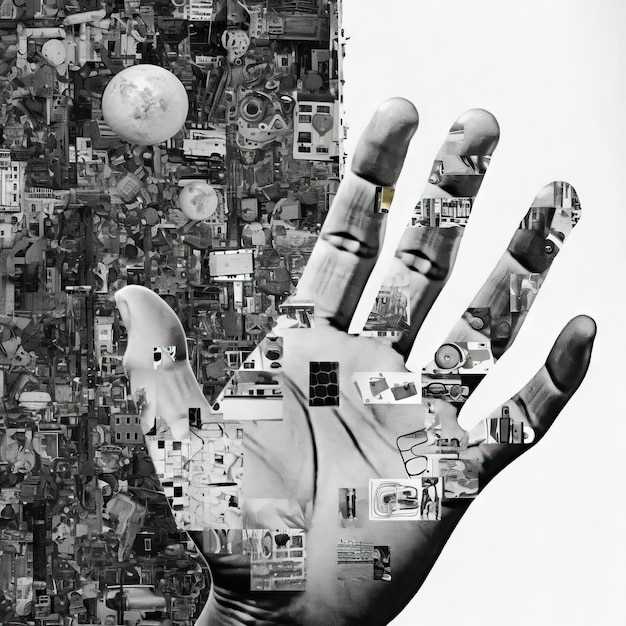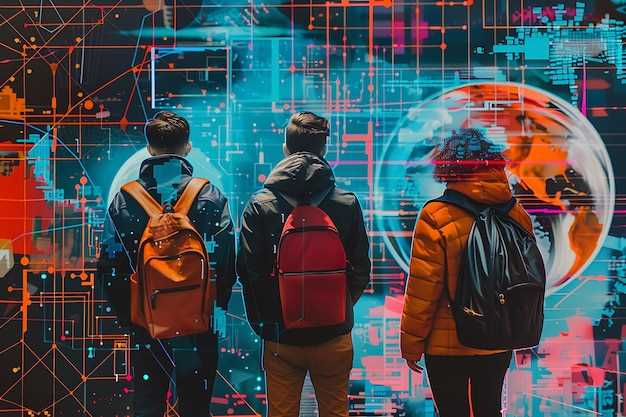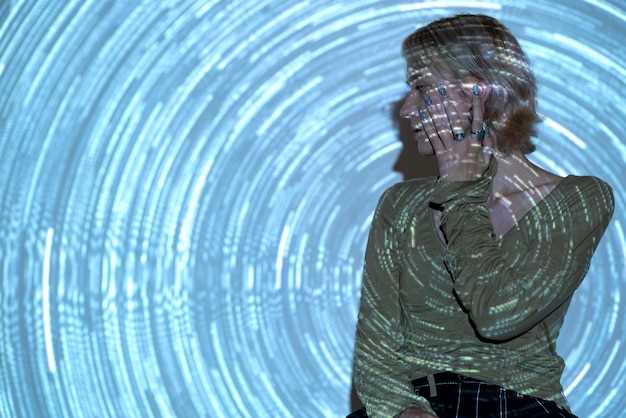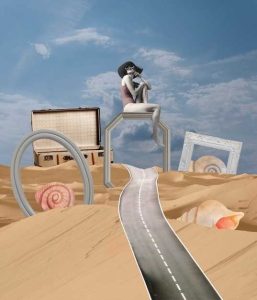
As the world continues to progress at an unprecedented pace, the realm of artistic expression has been profoundly influenced by the advancements in technology. The fusion of creativity and innovation has given rise to a new era in the art world, where traditional boundaries are constantly being pushed and redefined. This article delves into the intricate relationship between technology and art, exploring how the former has revolutionized the way artists conceptualize, create, and present their work.
One cannot underestimate the profound impact that technology has had on the artistic landscape. With the advent of digital tools and software, artists now have an expanded repertoire of mediums and techniques at their disposal. The traditional canvas and paintbrush have been complemented, and in some cases, replaced by digital tablets and styluses, enabling artists to create intricate and immersive digital artworks. This newfound freedom has not only democratized the art world but has also opened up new avenues for experimentation and exploration.
Moreover, technology has not only influenced the process of creating art but has also transformed the way art is experienced and consumed. The rise of virtual reality (VR) and augmented reality (AR) has revolutionized the way audiences engage with artworks, allowing for a more interactive and immersive experience. Visitors can now step into a virtual gallery, where they can explore artworks from different angles, interact with them, and even become a part of the artwork itself. This blurring of boundaries between the physical and digital realms has created a dynamic and multi-dimensional art experience.
Furthermore, technology has also played a pivotal role in expanding the reach and accessibility of art. The internet and social media platforms have provided artists with a global stage to showcase their work, transcending geographical limitations. Artists can now connect with a diverse audience, receive instant feedback, and collaborate with fellow creatives from all corners of the world. This interconnectedness has not only fostered a sense of community among artists but has also allowed for the exchange of ideas and the exploration of new artistic frontiers.
The Evolution of Art in the Digital Age
In the ever-changing landscape of the digital age, art has undergone a remarkable transformation. The advent of technology has revolutionized the way artists create, exhibit, and experience art. This evolution has brought forth a new era of artistic expression, challenging traditional notions and pushing the boundaries of creativity.
A Shift in Medium and Tools
With the rise of digital technology, artists have gained access to a vast array of new mediums and tools. Traditional paintbrushes and canvases have been replaced by digital tablets and software, enabling artists to experiment with new techniques and styles. The digital medium offers endless possibilities for manipulation, allowing artists to create immersive and interactive experiences that were previously unimaginable.
The Democratization of Art
One of the most significant impacts of technology on art is the democratization of the creative process. The internet and social media platforms have provided artists with a global stage to showcase their work, reaching audiences that were once inaccessible. This newfound accessibility has not only allowed artists to gain recognition but has also fostered a sense of community and collaboration among artists worldwide.
In conclusion, the evolution of art in the digital age has brought about a revolution in artistic expression. The shift in medium and tools, coupled with the democratization of art, has opened up new possibilities for artists to explore and redefine the boundaries of creativity. As technology continues to advance, it is exciting to envision how art will continue to evolve and shape our cultural landscape.
The Fusion of Technology and Traditional Art Forms
In the realm of artistic expression, the convergence of technology and traditional art forms has given rise to a new wave of creativity and innovation. This fusion has revolutionized the way artists conceptualize and create their works, blurring the boundaries between the tangible and the digital.
By integrating technology into traditional art forms, artists are able to explore new dimensions and push the boundaries of their craft. Whether it is through the use of digital tools, interactive installations, or virtual reality experiences, technology has become an integral part of the artistic process, offering artists new avenues for experimentation and self-expression.
One of the key benefits of this fusion is the ability to create immersive and interactive experiences for the audience. Through the use of technology, artists can engage viewers on a deeper level, inviting them to actively participate in the artwork. This interactive element not only enhances the overall experience but also challenges traditional notions of art as a passive form of consumption.
Furthermore, the fusion of technology and traditional art forms has opened up new possibilities for collaboration and cross-disciplinary work. Artists are now able to collaborate with technologists, scientists, and engineers to create groundbreaking works that merge art, science, and technology. This interdisciplinary approach not only enriches the artistic process but also fosters innovation and pushes the boundaries of what is considered art.
However, it is important to note that while technology has undoubtedly revolutionized the art world, it also raises questions about the authenticity and preservation of art. As artworks become increasingly digital and ephemeral, the traditional notions of ownership and conservation are being challenged. Artists and institutions must grapple with these issues and find ways to ensure the longevity and accessibility of digital artworks.
| Advantages | Challenges |
|---|---|
| Enhanced creativity and innovation | Authenticity and preservation concerns |
| Immersive and interactive experiences | Ownership and accessibility of digital artworks |
| Collaboration and cross-disciplinary work |
Virtual Reality: Redefining the Artistic Experience
Immersive technology has revolutionized the way we perceive and engage with art, providing a new dimension to the artistic experience. Virtual reality (VR) has emerged as a powerful tool that redefines the boundaries of traditional art forms, offering artists and viewers a unique and interactive encounter with creativity.
By transporting individuals into virtual realms, VR allows artists to create immersive environments that transcend the limitations of physical space. Through the use of virtual reality headsets, users can step into a digital world where they can explore and interact with art in ways never before possible. This technology enables artists to experiment with new mediums, materials, and techniques, pushing the boundaries of their creativity and challenging traditional artistic conventions.
Virtual reality also offers viewers an unprecedented level of engagement and participation in the artistic process. Instead of being passive observers, individuals become active participants, able to navigate and manipulate the virtual environment to uncover hidden layers of meaning within the artwork. This interactive element not only enhances the viewer’s understanding and appreciation of the art but also fosters a deeper connection between the artwork and the audience.
Furthermore, virtual reality opens up new possibilities for collaboration and collective creativity. Artists from different disciplines can come together in virtual spaces, transcending geographical boundaries and creating collaborative artworks that merge various artistic styles and perspectives. This collaborative aspect of VR not only enriches the artistic experience but also promotes the exchange of ideas and the exploration of new artistic horizons.
In conclusion, virtual reality has redefined the artistic experience by providing a platform for immersive and interactive encounters with art. Through the use of VR technology, artists can push the boundaries of their creativity, while viewers can engage with art in unprecedented ways. As virtual reality continues to evolve, it holds the potential to revolutionize the art world, offering endless possibilities for artistic expression and exploration.
Artificial Intelligence as a Creative Tool in Art
Unleashing the potential of cutting-edge technology, artists are embracing the power of Artificial Intelligence (AI) to revolutionize the creative process. By harnessing the capabilities of AI, artists are exploring new frontiers in art, pushing boundaries, and challenging traditional notions of creativity.
AI, often referred to as machine intelligence, is a branch of computer science that enables machines to simulate human intelligence. Through algorithms and deep learning, AI systems can analyze vast amounts of data, recognize patterns, and generate unique outputs. In the realm of art, AI is being employed as a creative tool, collaborating with artists to produce innovative and thought-provoking works.
- Expanding artistic possibilities: AI opens up a world of possibilities for artists, enabling them to explore new mediums, techniques, and styles. By leveraging AI algorithms, artists can generate complex visualizations, create interactive installations, and experiment with unconventional materials.
- Exploring the intersection of man and machine: AI-driven art blurs the boundaries between human creativity and machine intelligence. Artists are using AI as a tool to explore the relationship between humans and technology, questioning the role of the artist and the authenticity of creative expression.
- Challenging traditional artistic processes: AI challenges the traditional artistic process by introducing an element of unpredictability and randomness. Artists can input data into AI systems and let the algorithms generate unexpected outcomes, leading to serendipitous discoveries and unconventional artistic expressions.
- Addressing societal and cultural issues: AI-driven art has the potential to address pressing societal and cultural issues. Artists can use AI as a means to explore topics such as ethics, identity, and the impact of technology on society, provoking critical discussions and raising awareness.
- Collaboration between humans and machines: AI serves as a collaborator for artists, augmenting their creative process rather than replacing them. Artists can work in tandem with AI systems, leveraging the machine’s analytical capabilities while infusing their own unique vision and artistic sensibilities.
As AI continues to advance, its integration into the art world offers exciting possibilities for artists to push the boundaries of creativity and challenge conventional artistic practices. By embracing AI as a creative tool, artists can explore uncharted territories, redefine artistic expression, and provoke new dialogues in the ever-evolving landscape of contemporary art.
The Impact of Social Media on Artistic Expression

Social media platforms have revolutionized the way artists express themselves and connect with their audiences. These digital platforms have become a powerful tool for artists to showcase their work, gain exposure, and engage with a global community of art enthusiasts. The advent of social media has opened up new avenues for artistic expression, allowing artists to break free from traditional constraints and explore innovative ways to create and share their art.
One of the key impacts of social media on artistic expression is the democratization of art. In the past, artists relied on galleries, museums, and other traditional institutions to showcase their work to a limited audience. However, with the rise of social media, artists now have the ability to reach a much wider audience without the need for intermediaries. They can directly share their artwork with people from all over the world, breaking down geographical barriers and allowing for a more diverse and inclusive art scene.
Furthermore, social media platforms provide artists with a space to experiment and push the boundaries of their creativity. Artists can easily share their works-in-progress, receive feedback, and collaborate with other artists, fostering a sense of community and inspiration. The instant feedback and engagement from followers on social media can also influence an artist’s creative process, leading to new ideas and artistic directions.
Additionally, social media has transformed the way art is consumed and experienced. Users can now discover and explore a vast array of art styles, genres, and artists from the comfort of their own homes. Social media algorithms and curated feeds expose users to a diverse range of art, expanding their knowledge and appreciation for different artistic expressions. This accessibility has not only broadened the audience for art but has also created new opportunities for emerging artists to gain recognition and establish their careers.
However, it is important to acknowledge the potential drawbacks of social media on artistic expression. The pressure to constantly produce and share content can sometimes lead to a focus on quantity over quality, potentially diluting the artistic integrity. Moreover, the instant gratification and validation-seeking nature of social media can influence artists to create work that is more likely to garner attention and likes, rather than staying true to their artistic vision.
In conclusion, social media has had a profound impact on artistic expression, revolutionizing the way artists create, share, and connect with their audiences. It has democratized the art world, provided a platform for experimentation and collaboration, and transformed the way art is consumed. While there are potential drawbacks, the overall influence of social media on artistic expression is undeniably significant in shaping the contemporary art landscape.
Exploring the Boundaries of Art through Augmented Reality

Pushing the limits of artistic expression by harnessing the power of augmented reality, this section delves into the exciting realm where technology and creativity intersect. Through the fusion of digital elements with the physical world, artists are able to transcend traditional artistic boundaries and immerse viewers in captivating and interactive experiences.
Unleashing the Potential: Augmented reality offers artists a vast playground for experimentation, enabling them to break free from the confines of traditional mediums and explore new dimensions of artistic expression. By seamlessly blending virtual and real-world elements, artists can create immersive installations that challenge our perception of reality and invite us to question the boundaries of art itself.
Engaging the Senses: With augmented reality, art becomes a multisensory experience, captivating not only our visual senses but also our auditory and tactile perceptions. Through the integration of sound, touch, and even smell, artists can create truly immersive environments that transport viewers into alternate realities, blurring the lines between the physical and the digital.
Interactive Narratives: Augmented reality opens up new avenues for storytelling, allowing artists to create dynamic narratives that unfold in real-time and respond to the viewer’s presence and interactions. By merging the virtual and physical worlds, artists can craft interactive experiences that engage viewers on a deeper level, inviting them to actively participate in the artistic journey.
Democratizing Art: Augmented reality has the potential to democratize art by making it accessible to a wider audience. Through mobile applications and wearable devices, viewers can experience augmented reality artworks from the comfort of their own homes or while exploring public spaces. This accessibility breaks down the barriers of traditional art spaces, allowing art to reach and inspire people from all walks of life.
In conclusion, augmented reality serves as a powerful tool for artists to push the boundaries of art, engage viewers in multisensory experiences, create interactive narratives, and democratize the art world. By embracing this technology, artists can redefine what it means to create and experience art in the contemporary era.

